 1999 Opel Vectra B CC (facelift 1999) Dimensions, Size & Specs
1999 Opel Vectra B CC (facelift 1999) Dimensions, Size & SpecsMeasurements of the 1999 Opel Vectra B CC, engineered for optimal performance and comfort
| Dimensions | |
|---|---|
| Length: | 4495 mm177.0 in14.7 ft |
| Width: | 1707 mm67.2 in5.6 ft |
| Width (Opened Mirrors): | 1841 mm72.5 in6.0 ft |
| Height: | 1425 mm56.1 in4.7 ft |
| Trunk Capacity: | 480 liter17.0 cu ft |
| Trunk Capacity (Max): | 790-1423 liter27.9-50.3 cu ft |
| Weight Specifications | |
| Curb Weight: | 1185-1495 kg2612-3296 lbs |
| Maximal permitted Weight: | 1715-1950 kg3781-4299 lbs |
| Tire Specifications | |
| Rims Sizes: |
|
| Tire Sizes: |
|
The Opel Vectra B CC facelift, produced from 1999 to 2002, is a refined hatchback model representing the mid-life update of the Vectra B generation. This facelifted variant features modernized styling and improved features while maintaining the practical and spacious attributes characteristic of the Vectra series. Measuring 4495 mm (176.8 inches) in length, 1707 mm (67.2 inches) in width, and standing 1425 mm (56.1 inches) tall, the car strikes a balanced profile that suits urban and suburban driving environments with ease. When considering width with opened mirrors, the Vectra B CC spans 1841 mm (72.4 inches), which is crucial for evaluating parking and clearance dimensions.
Weighing between 1185 kg (2613 lbs) to 1495 kg (3296 lbs) depending on specific trim and equipment, the vehicle offers a stable yet nimble driving experience. Its maximum permissible weight ranges from 1715 kg (3782 lbs) to 1950 kg (4299 lbs), ensuring a good payload capacity for passengers and cargo alike. The hatchback boasts a respectable luggage capacity of 480 liters (16.9 cubic feet) with rear seats in place, which extends significantly to between 790 liters (27.9 cubic feet) and 1423 liters (50.2 cubic feet) when the rear seats are folded down, making it versatile for larger cargo loads.
Equipped with varying rim sizes of 14, 15, and 16 inches, the Vectra B CC offers tire sizes including 195/65 R15, 205/55 R16, and 175/70 R14, allowing for a balance between comfort and performance based on driver preference. This hatchback generation successfully blends practical space, manageable exterior dimensions, and a robust weight range, appealing to drivers seeking a vehicle suitable for daily commutes, family use, and leisure activities alike. The 1999 facelift brought subtle updates that keep the model relevant in the competitive hatchback segment, underlining Opel's commitment to quality and driver comfort.
Discover the standout features that make the 1999 Opel Vectra B CC a leader in its class
Have a question? Please check our knowledgebase first.
The Opel Vectra B CC (facelift 1999) offers a well-balanced size typical for a hatchback of its era. It has a length of 4495 mm (approximately 177 inches), making it spacious enough for comfortable seating and cargo in the compact executive segment. The width measures 1707 mm (about 67.2 inches) with a mirror-open width of 1841 mm (around 72.4 inches), ensuring practical road presence without being too bulky for urban driving. The height stands at 1425 mm (roughly 56.1 inches), which contributes to a sleek, aerodynamic silhouette that also aids handling and stability. These dimensions place the Vectra B CC as a well-proportioned hatchback, balancing interior space, drivability, and parking ease.
The Opel Vectra B CC (facelift 1999) provides a versatile luggage capacity well suited for various needs. With the rear seats in their normal upright position, it offers a generous 480 liters (approximately 16.9 cubic feet) of trunk space, sufficient for everyday shopping, small trips, or luggage for several passengers. When you fold down the rear seats, this capacity significantly increases, ranging from 790 liters (around 27.9 cubic feet) up to a maximum of 1423 liters (close to 50.2 cubic feet) depending on seat configuration and exact folding options. This expanded space makes the car highly practical for larger cargo loads, such as transporting sports equipment, furniture pieces, or luggage for longer journeys, enhancing the hatchback’s appeal as a versatile family or leisure car.
The curb weight of the Opel Vectra B CC (facelift 1999) varies between approximately 1185 kg and 1495 kg (about 2613 to 3297 lbs), depending on specific model trims, engine options, and equipment levels. A lighter curb weight near the lower end typically results in improved fuel economy and more agile driving dynamics, making the Vectra feel more responsive and easier to handle, especially in urban settings. Conversely, variants toward the higher end of this range might include more features or larger engines, potentially trading off some fuel efficiency for added performance, comfort, or safety equipment. Overall, this weight range is competitive for cars in its segment at the time, striking a good balance between sturdiness and drivability.
The maximum gross vehicle weight (GVW) of the Opel Vectra B CC (facelift 1999) ranges from 1715 kg to 1950 kg (approximately 3781 to 4299 lbs), indicating the total allowable weight of the vehicle when fully loaded, including passengers, cargo, and fuel. This GVW suggests the car is designed to safely carry a significant payload, reflecting its utility as a practical hatchback capable of accommodating up to five passengers plus varying cargo loads. The difference between curb weight and GVW gives you an idea of the maximum additional weight the vehicle can carry, which ranges from about 520 kg to 765 kg (1146 to 1687 lbs). This capacity supports diverse usage scenarios, from daily commuting with passengers to longer trips with more luggage.
With mirrors open, the Opel Vectra B CC (facelift 1999) measures 1841 mm (approximately 72.4 inches) wide, which is a crucial dimension for practical driving and parking, especially in tight urban environments. While this width is standard for vehicles in the compact executive hatchback category, it means drivers should carefully consider this size when maneuvering through narrow streets, parking spaces, or garages. The additional width caused by the mirrors accounts for about 134 mm (5.3 inches) more than the body width alone. Drivers often fold in the mirrors to reduce width during parking. Overall, the car's width strikes a balance between providing sufficient cabin space for occupants and maintaining manageable external dimensions for typical city and suburban driving.
A standard single-car garage typically measures about 2.4 to 2.7 meters (approx. 7.9 to 8.9 feet) wide and around 5 to 6 meters (16.4 to 19.7 feet) deep. The Opel Vectra B CC (facelift 1999) has a length of 4495 mm (about 177 inches or 14.75 feet) and a width of 1707 mm (67.2 inches or about 5.6 feet) without mirrors extended. Even when accounting for mirrors open (1841 mm or approx. 72.4 inches, 6 feet), the vehicle's width is well within the standard garage width. Height (1425 mm or 56.1 inches) is also well below typical garage ceiling heights. Therefore, the Vectra B CC fits comfortably within the dimensions of most standard residential garages, providing ease of parking and protection from weather or other external elements.
The Opel Vectra B CC (facelift 1999) is an evolution of the first-generation Vectra A, with noticeable improvements in size and design refinement. The Vectra B CC is longer at 4495 mm (177 inches) compared to the Vectra A CC's length, which was roughly around 4,370 mm to 4,420 mm depending on the configuration. The width of the Vectra B at 1707 mm (67.2 inches) is slightly increased from the Vectra A's approximate 1690 mm (66.5 inches), offering more interior space and road presence. The height remains comparable, around 1425 mm (56.1 inches), contributing to a similar sleek profile. These dimensional changes translate to improved cabin space and luggage capacity in the Vectra B CC, while retaining the hatchback’s balanced proportions. The facelift models also benefited from enhanced aerodynamics and updated styling, making the Vectra B a more modern and comfortable option than its predecessor.
In the compact executive hatchback category, the Opel Vectra B CC (facelift 1999) holds its ground well when compared to competitors like the Ford Mondeo hatchback, Volkswagen Passat hatchback, and Peugeot 406 hatchback of its time. At 4495 mm (177 inches) in length and 1707 mm (67.2 inches) in width, it offers a competitive size that balances interior space with manageable exterior dimensions. Its luggage capacity of 480 liters (16.9 cubic feet) with seats up and up to 1423 liters (50.2 cubic feet) with seats folded is generally superior or comparable to rivals, reflecting its family-friendly practicality. Additionally, its curb weight between 1185 and 1495 kg makes it relatively lightweight, benefiting fuel efficiency and handling. Overall, the Vectra B CC is a practical and spacious option for buyers seeking a versatile hatchback with comfortable accommodation and flexible cargo capacity in this segment.
The Opel Vectra B CC (facelift 1999) offers a variety of rim sizes including 14, 15, and 16 inches. The tire sizes commonly used are 175/70 R14, 195/65 R15, and 205/55 R16. Smaller 14-inch rims fitted with 175/70 tires typically provide a more comfortable ride due to the taller sidewall, which absorbs road imperfections better. The 15-inch rims with 195/65 tires strike a balance between comfort and handling, offering improved grip and stability without compromising too much ride softness. Meanwhile, the sportier 16-inch rims with low profile 205/55 tires enhance the vehicle’s cornering ability and steering responsiveness due to reduced sidewall flex. However, they may slightly reduce ride comfort on rough roads due to stiffer sidewalls. These options allow buyers to select a setup that best matches their driving preferences, whether prioritizing comfort or sportiness.
The 1999 facelift of the Opel Vectra B CC brought notable updates that refreshed the model's appeal for the second phase of its production (1999-2002). Visually, the facelift included redesigned front and rear bumpers, sleeker headlight and taillight assemblies, and updated grille designs that made the car look more modern and dynamic. These styling enhancements improved aerodynamics slightly, contributing to marginal gains in fuel efficiency and noise reduction. Under the hood, engine options and tuning were updated to meet stricter emissions standards and improve performance smoothness, with an emphasis on refining fuel economy and driveability. The facelift also often included interior upgrades such as improved materials, ergonomic adjustments, and updated features for better comfort. Overall, the facelift ensured the Vectra B CC remained competitive and appealing in the late 1990s and early 2000s compact executive segment.
Discover similar sized cars.
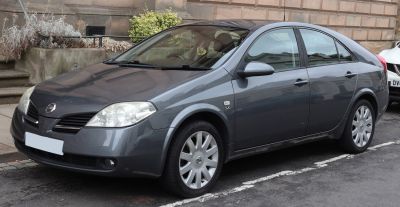
| Production: | 2002-2007 |
|---|---|
| Model Year: | 2002 |
| Length: | 4565 mm179.7 in |
| Width: | 1760 mm69.3 in |
| Height: | 1480 mm58.3 in |
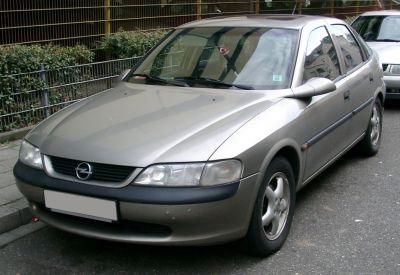
| Model Year: | 1996 |
|---|---|
| Length: | 4495 mm177.0 in |
| Width: | 1841 mm72.5 in |
| Height: | 1425 mm56.1 in |
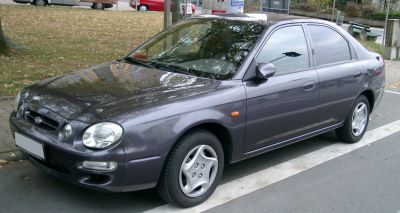
| Production: | 1997-2001 |
|---|---|
| Model Year: | 1998 |
| Length: | 4475 mm176.2 in |
| Width: | 1711 mm67.4 in |
| Height: | 1427 mm56.2 in |
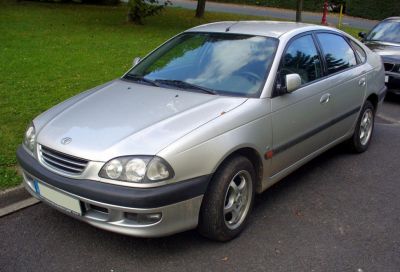
| Production: | 1997-2003 |
|---|---|
| Model Year: | 1997 |
| Length: | 4490 mm176.8 in |
| Width: | 1710 mm67.3 in |
| Height: | 1425 mm56.1 in |
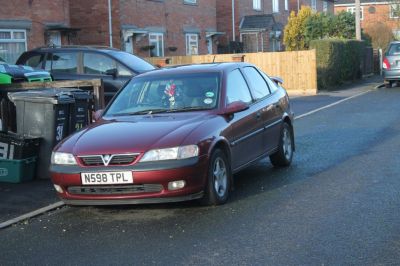
| Production: | 1995-1999 |
|---|---|
| Model Year: | 1995 |
| Length: | 4495 mm177.0 in |
| Width: | 1841 mm72.5 in |
| Height: | 1425 mm56.1 in |
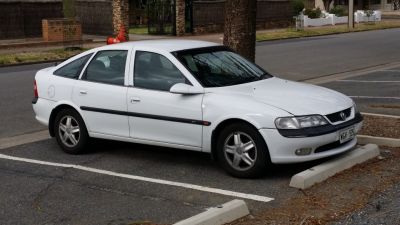
| Production: | 1998-2000 |
|---|---|
| Model Year: | 1998 |
| Length: | 4477 mm176.3 in |
| Width: | 1707 mm67.2 in |
| Height: | 1428 mm56.2 in |
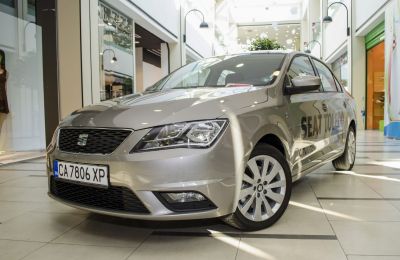
| Production: | 2012-2018 |
|---|---|
| Model Year: | 2012 |
| Length: | 4482 mm176.5 in |
| Width: | 1706 mm67.2 in |
| Height: | 1461 mm57.5 in |
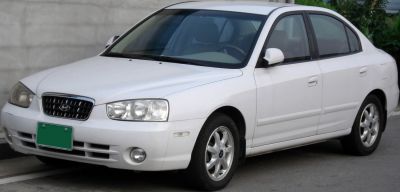
| Production: | 1999-2006 |
|---|---|
| Model Year: | 2001 |
| Length: | 4460-4520 mm175.6-178.0 in |
| Width: | 1700-1720 mm66.9-67.7 in |
| Height: | 1425-1460 mm56.1-57.5 in |
